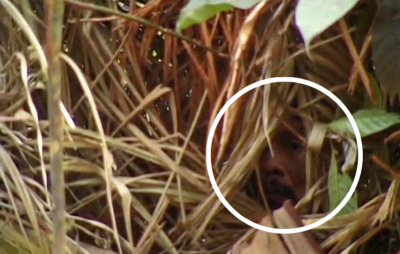A Symbol of Indigenous Genocide: “The Man of the Hole” Dies in Brazil

All Global Research articles can be read in 51 languages by activating the “Translate Website” drop down menu on the top banner of our home page (Desktop version).
To receive Global Research’s Daily Newsletter (selected articles), click here.
Follow us on Instagram and Twitter and subscribe to our Telegram Channel. Feel free to repost and share widely Global Research articles.
***
An Indigenous man known as “The Man of the Hole” has died in Brazil. He was the last member of his tribe, and the only inhabitant of Tanaru Indigenous Territory in Rondonia state, in the western Brazilian Amazon.
The rest of his people had been massacred in a series of attacks from the 1970s onwards, but little was known about his people as he resisted attempts to contact him. Known to outsiders as The Man of the Hole for his habit of constructing deep holes, some with sharpened stakes in them, he was filmed by a government team in 2018 during a chance encounter.
Tanaru territory stands as a small island of forest in a sea of vast cattle ranches, in one of the most violent regions in Brazil. Survival, together with organizations inside Brazil, campaigned for many years for his land to be protected.
Fiona Watson, Survival’s Research and Advocacy Director, visited the territory in 2004 with a government monitoring team, and wrote an account of the visit.
She said today: “No outsider knew this man’s name, or even very much about his tribe – and with his death the genocide of his people is complete. For this was indeed a genocide – the deliberate wiping out of an entire people by cattle ranchers hungry for land and wealth.
“He symbolized both the appalling violence and cruelty inflicted on Indigenous peoples worldwide in the name of colonization and profit, but also their resistance. We can only imagine what horrors he had witnessed in his life, and the loneliness of his existence after the rest of his tribe were killed, but he determinedly resisted all attempts at contact, and made clear he just wanted to be left alone.
“If President Bolsonaro and his agribusiness allies get their way, this story will be repeated over and over again until all the country’s Indigenous peoples are wiped out. The Indigenous movement in Brazil, and Survival, will do everything possible to ensure that doesn’t happen.”

Tanaru Indigenous Territory, Brazil (home to the man known as “The last of his tribe” or “The man of the hole” © Survival International
OPI, the Observatory for the Human Rights of Uncontacted and recently-contacted Peoples, has called for the Tanaru reserve to be permanently protected as a memorial to Indigenous genocide. Survival backs that call.
Note to Editors: The 8,000 hectare Tanaru Indigenous Territory is one of seven territories in Brazil protected by Land Protection Orders. President Bolsonaro and his allies have long campaigned to abolish these protections.
*
Note to readers: Please click the share buttons above or below. Follow us on Instagram and Twitter and subscribe to our Telegram Channel. Feel free to repost and share widely Global Research articles.
Featured image: The Man of the Hole looks out from his hut – a still from the film Corumbiara, by the film-maker Vincent Carelli. © Vincent Carelli

